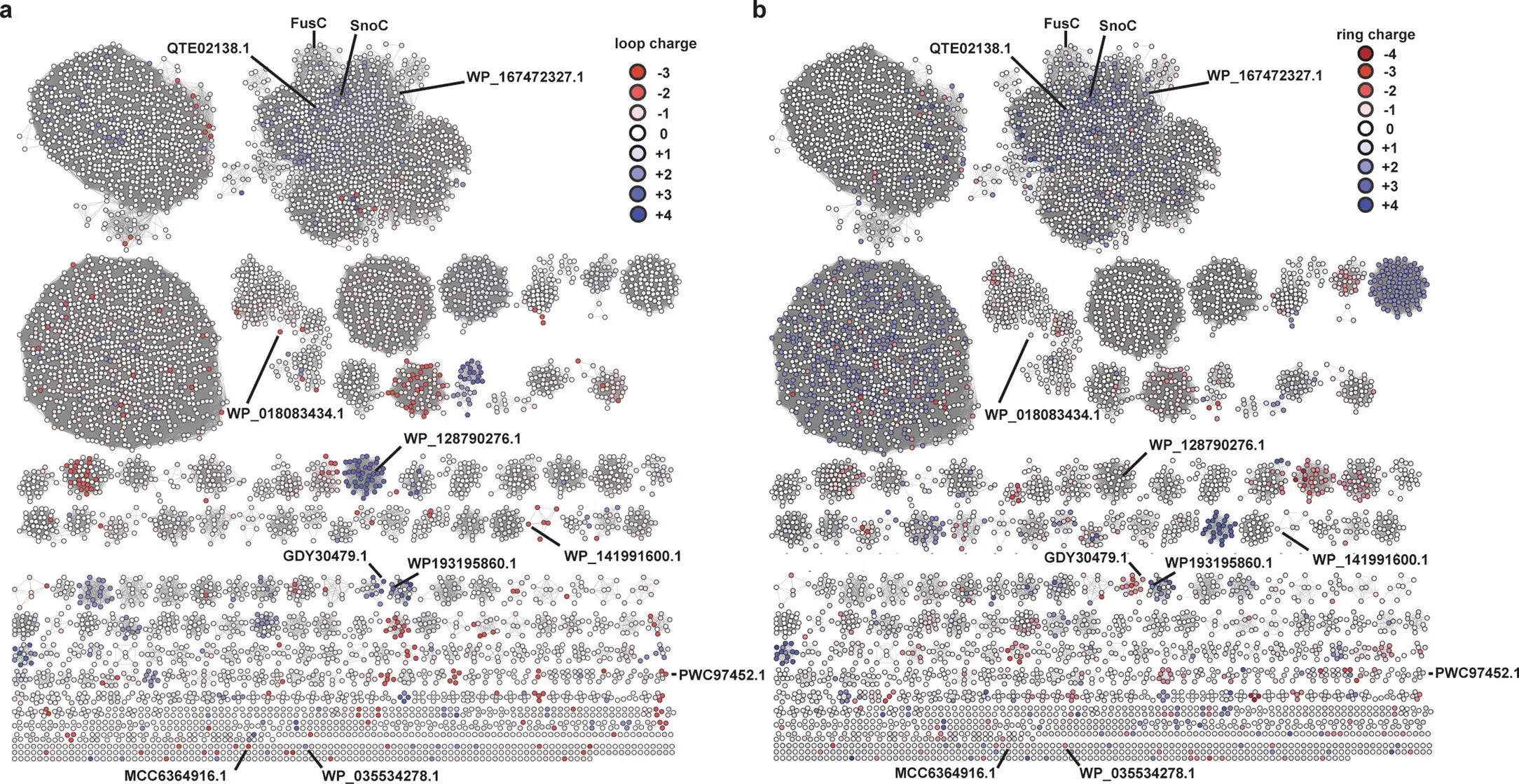Lasso peptides, a fascinating class of natural compounds, have emerged from the depths of bacterial metabolism to capture the attention of researchers worldwide. These unique molecules are distinguished by their extraordinary lasso-like structure, which provides enhanced stability against harsh environmental conditions. Recent studies, notably one published in *Nature Chemical Biology*, have shed light on the intricate processes behind their formation and production, signaling a potential paradigm shift in the development of novel therapeutics.
In essence, lasso peptides can be seen as linear chains of amino acids folded into an intricate slipknot structure. This fascinating configuration not only protects them from degradation but also renders them suitable candidates for therapeutic applications. Graduate student Susanna Barrett, working in the Mitchell lab, pointed to the versatility of lasso peptides, highlighting their antibacterial, antiviral, and anti-cancer properties. Such features affirm the significance of studying these peptides and exploring their potential in clinical settings.
The process by which lasso peptides are synthesized is no less fascinating. These molecules are synthesized by ribosomes, which assemble amino acids into chains, before two critical enzymes—peptidases and cyclases—interact to convert linear precursors into their characteristic knotted structures. For over thirty years, the scientific community has sought to unravel the folding mechanics of these peptides, particularly focused on the elusive cyclases that play a pivotal role in their assembly.
One significant hurdle in this quest has been the notoriously difficult nature of the enzymes involved. They tend to be insoluble or inactive in purified form, which often makes experimental investigations laborious. Nevertheless, recent advances have brought some breakthroughs. The characterization of fusilassin cyclase (FusC) in 2019 was a critical moment in this domain, giving researchers a viable model for studying the folding process, despite not having a complete understanding of its structure at that time.
An innovative aspect of the recent research includes the application of sophisticated artificial intelligence programs, most notably AlphaFold, to predict the three-dimensional structure of FusC. This technological leap has allowed researchers to interrogate the protein more deeply, identifying critical residues in the active site that interact with lasso peptide substrates. Barrett emphasized that these insights derived from AI-assisted structural studies were crucial in detailing how the enzyme interacts with the peptide chains.
The work didn’t stop at predicting structures. The integration of molecular dynamics simulations into their approach provided a deeper, computational understanding of the interactions at play during the folding process. Song Yin, a graduate student from the Shukla lab, underscored the value of such simulations; they paved the way for innovative methodologies in peptide engineering that could benefit a diverse array of studies in the field.
As the researchers delved deeper into their computational investigations, they uncovered that specific regions within the active site of FusC play critical roles in the folding mechanism. Through cell-free biosynthesis experiments, the team manipulated the amino acids in the helix 11 region of the enzyme, which ultimately led to the discovery of a mutant version of FusC capable of folding lasso peptides that the original couldn’t.
This breakthrough not only reinforces their computational model but also opens avenues for future explorations of lasso peptide biosynthesis across different systems. Associate professor Diwakar Shukla remarked on how the study offered invaluable insights into the biochemical interactions governing the tight-lacing mechanism fundamental to these peptides.
The implications of this research extend beyond mere academic curiosity; they serve to transform the landscape of drug development. Collaborating with the San Diego-based company Lassogen, the researchers illustrated how their newfound knowledge could guide the engineering of cyclases, facilitating the production of diverse lasso peptides. As Mark Burk, CEO of Lassogen, pointed out, the ability to generate diverse lasso peptides is crucial for optimizing therapeutic applications, particularly when natural enzymes fall short in producing drugs of interest.
Thus, the convergence of powerful computational techniques, artificial intelligence, and innovative biosynthetic strategies presents a burgeoning frontier in drug design. As Douglas Mitchell, a professor of chemistry, aptly noted, this interdisciplinary effort is a testament to how collaborative research can spark transformative advancements in science.
The journey towards understanding and harnessing the potential of lasso peptides is marked by significant scientific milestones. This recent study, with its sophisticated interplay of computational biology, synthetic methodologies, and innovative enzymatic engineering, showcases the vast potential of these molecules as novel therapeutic agents. As researchers continue to explore and manipulate these biomolecules, they pave the way for the development of tailored medications that address unmet medical needs globally. The realm of lasso peptides is indeed an exciting frontier in biochemical research, marrying nature’s ingenuity with human innovation for the treatment of complex diseases.

